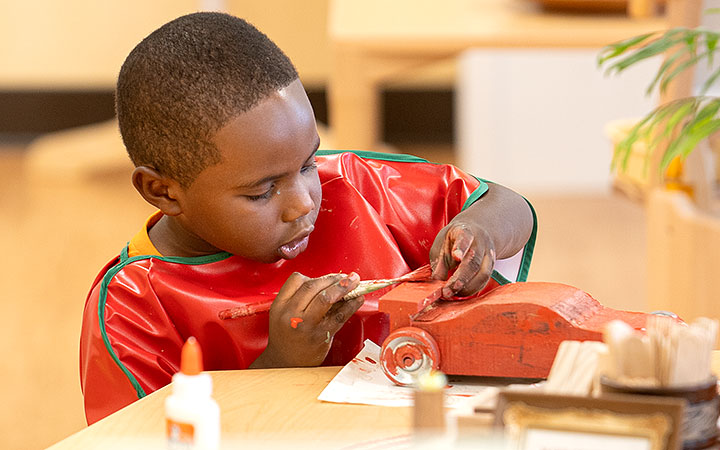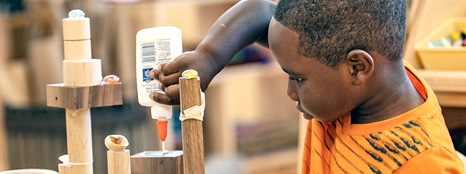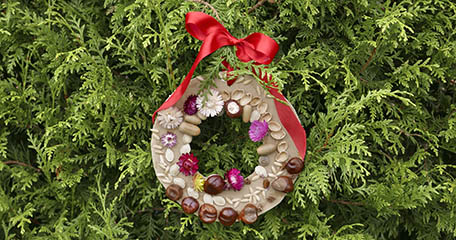Arts and crafts for every child
| June 2012In spite of the fact that most school systems treat art as a sideline, more and more educators are coming to realise what the art teachers have been saying all along: art is not a frill, but one of the most important and enjoyable areas of a child’s education. Art opens new doors of experience by helping children to see the world around them in new ways. It sharpens their powers of observation, heightens their sense of appreciation, and awakens them to the possibilities of their own hands, hearts, and minds.
Importance for child development
Arts and crafts can help children to develop socially and emotionally, too. When they are encouraged to give form to their ideas, they learn the value of self-expression. In discovering their ability to create, they become conscious of their imagination and their freedom to make choices. And in mixing colours or combining materials to make new ones, they can learn to think in terms of change.
As a means to explore shapes and textures, quantities, sizes, and proportions, art can also aid children’s intellectual development. It helps them to grasp the concepts they will need in learning to read, write, add, and subtract; it stimulates inquisitiveness, critical thinking, and a healthy self-confidence. Physically, it develops fine motor control and hand-eye coordination. In short, art is a window to new horizons in every sphere of life.
Small children need and love daily chances to experiment and explore, to “mess around” at their own unhurried pace. Let them crumple and tear magazines or newspapers, cut and paste scraps, shape playdough or clay. Let them scribble to their heart’s content: it is as natural and necessary a step toward drawing and writing as crawling is to walking. Don’t feel you have to be an artist yourself, and don’t try to “teach” your child art. Help him or her to discover it for himself. The fact that blue and yellow make green means more to a child when he finds it out on his own.
Self-expression
Creativity should be encouraged from early on. If art is neglected in the lower grades when children are relatively uninhibited and free – willing to experiment, to make mistakes, and to try again – it will be more frustrating for them to try to express themselves when they are older.
In the first three or four years, the enormous joy and satisfaction a child experiences in the act of creation itself is the most important factor. Don’t underestimate this. You may see the result of a craft project as its most significant aspect, but for the child, the value of the activity is not measured by the finished product. The fun of doing it is just as satisfying. Later, of course, the end result will become more and more important, and with it, the encouragement (and, when called for, constructive criticism) that lets the child know his or her art is valuable.
Always treat a child’s art work with respect. Never belittle it or criticise it. When children are made to feel that what they make is not only a form of self-expression but a gift to be shared, their enthusiasm for further progress will grow. Show appreciation by making suggestions: “Next week is Grandma’s birthday. Why don’t you give her that picture you painted?” A child’s artwork has brightened the day of many a hospitalised friend, elderly neighbour, or local prison inmate.
Constructive creativity
Children are always eager to participate in life as fully as possible, and as parents and educators, we must continually find ways to respond to their eagerness. If we do not occupy them in constructive ways, we should not be surprised if they become restless and bored. With younger children the problem is easily solvable; with older ones, it can be more difficult. Kathy Mow, an artist who has taught art for some forty years, writes:
As children, especially teenagers, grow up into young men and women, we must find ways to give them continual outlets for their creative urges. It is not fair to offer them a diet of passive activities only. Street graffiti, unusual hairstyles, or provocative dress, excessive peer-group identification – all these reflect the unfulfilled need for constructive self-expression.
The creative potential is there in each child, waiting to be developed. Aside from providing a way to spend many hours constructively, whether alone or with others, enjoyment in a particular craft or art form – painting, weaving, knitting, pottery, calligraphy, wood or metal work, building models – may grow into a hobby and, in some cases, into a guiding interest that helps a child to find a vocation later in life.









